Container welding plays a pivotal role in ensuring the durability and safety of cargo transport systems. The Artsen II PM500F welding machine stands out as a game-changer in this domain, specifically in welding container front panels. Let's delve into the various facets of container welding, material classification, and the invaluable role played by the Artsen II PM500F welding machine in improving welding efficiency and quality.
I. Container Classification and Features:
Containers, known for their versatility and ease of mechanical handling, serve as indispensable cargo containers for seamless transportation. They come in various types, each catering to specific cargo and logistical needs:
1)Types of Containers:
Classified by Cargo: general cargo containers, bulk cargo containers, liquid cargo containers, and refrigerated containers...
Classified by Materials: wood containers, steel containers, aluminum alloy containers, fiberglass containers, and stainless steel containers...
Classified by Structure: foldable containers, fixed containers (including closed-top containers, open-top containers, and flat rack containers)...
Classified by Weight: 30 tons containers, 20 tons containers, 10 tons containers, 5 tons containers, and 2.5 tons containers...
2)Materials of Containers:
Different container materials offer distinct advantages and limitations:
Steel Containers: known for their strength, structural integrity, waterproof property, and cost-effectiveness. However, they tend to be heavier and susceptible to corrosion.
Aluminum Alloy Containers: made of aluminum alloy materials, featuring lightweight, beautiful appearance, anti-corrosion, good elasticity, convenient processing and low processing and repair costs, and long service life. Yet, they are costlier and present challenges in welding.
Fiberglass Containers: made of fiberglass material, renowned for their high strength, good rigidity, large capacity, heat insulation, corrosion resistance, good chemical resistance, easy to clean, and easy to repair. Nonetheless, their weight is large, easy to age, and the strength of the screw is reduced.
3)Container International Standard Dimensions:
The present international standards comprise 13 variations: same width (2438mm), 4 kinds of length (12192mm, 9125mm, 6058mm, and 2991mm), and 3 kinds of height (2896mm, 2591mm, 2438mm).
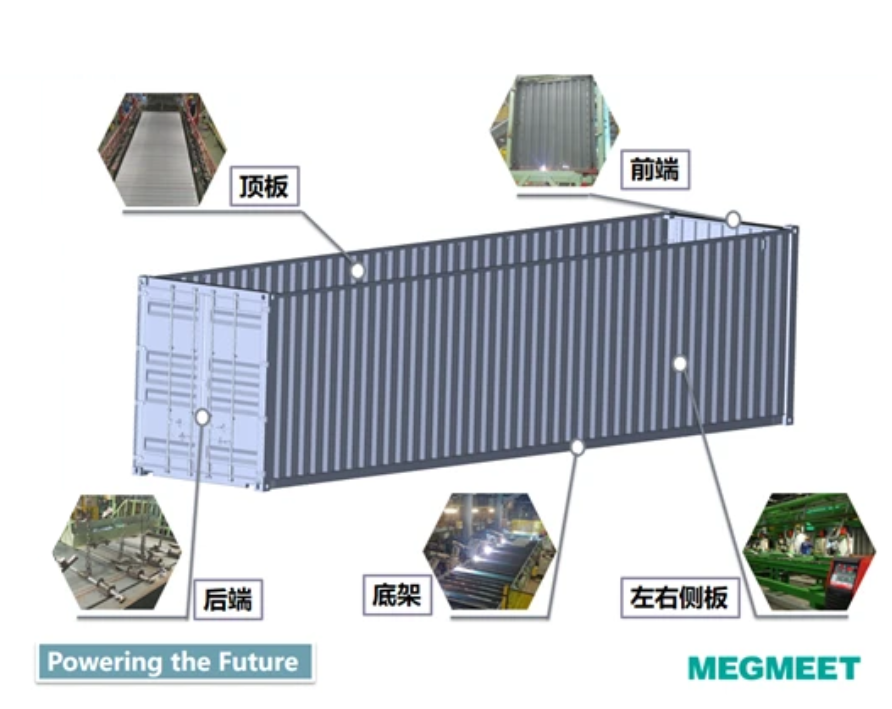
P1 Brokeup Diagram of Container
II. Container Welding Clients
China International Marine Containers (CIMC) Group stands as a global leader in logistics and energy equipment supply, headquartered in Shenzhen, China. The company is dedicated to several primary business domains, including containers, road transport vehicles, energy and food equipment, marine engineering, heavy-duty trucks, logistics services, and airport equipment, providing high-quality and reliable equipment and services. Supporting these thriving businesses are specialized financial management through a finance company and financial solutions provided by a financial leasing company. As a diversified multinational conglomerate serving the global market, CIMC has over 300 member enterprises and four listed companies in regions like Asia, North America, Europe, and Australia. Its clientele and sales networks span 100+ countries and regions worldwide.
The container industry represents CIMC's longest-standing and largest-scale business, boasting numerous production bases strategically located in major ports across mainland China. We offer a comprehensive range of container products and possess suppliers with completely independent intellectual property rights, encompassing dry containers, refrigerated containers, special containers, modular buildings, and flooring across five major business sectors. CIMC's products are pervasive in major logistics systems worldwide, including North America, Europe, and Asia. Since 1996, CIMC has consistently maintained its position as a global leader in container production and sales. In 2007, CIMC became the first enterprise in the global container industry to surpass an annual output of 2 million TEUs.
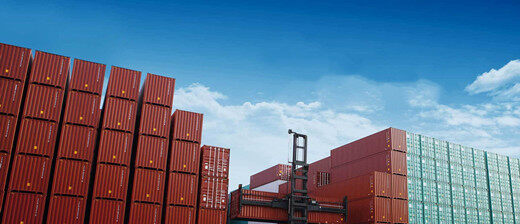
P2 CIMC Factory
III. The Challenges Encountered in Container Welding
The finished square column is constructed by welding a square tube with two plates. The plates are made of Q345 material, ranging between 32mm to 35mm in thickness, while the square tube is also of Q345 material, with a thickness varying between 12mm to 20mm. The square tube is beveled at an angle between 25° to 37°. To boost efficiency, the client attempted robotic welding. However, due to the thickness of the plates, narrow gaps, and the need for multiple layers of welding, there's been a significant lack of fusion at the base, resulting in an extremely low product qualification rate, requiring urgent resolution.
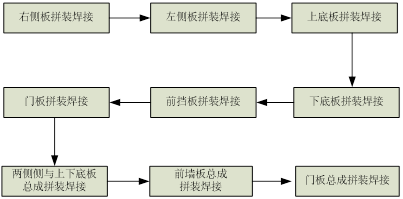 />
/>
P3 Production Process
Regarding the weld seam of the front wall panel made of electro-galvanized sheet with a 2mm thickness, a specialized machine is used for welding. The client aims to further enhance efficiency by targeting a shipment output of 200 units per day. The front wall panel, being a preceding component, necessitates an increase in welding speed from 600mm/min to 900mm/min. Additionally, the seam ends must not use arc initiation boards, initiating the arc directly to complete the entire welding process, eliminating the need for subsequent arc initiation board polishing processes to meet overall efficiency requirements. Due to the influence of rust-proof paint coatings, the arc is unstable with significant spattering. The client requires well-fused arc initiation sections, flawless arc termination segments, stable arc, minimal spatter, fast welding speed with a weld seam forming excess height not exceeding 0.5mm, and a width ranging between 3 to 4mm.

P4 Front Wall Stitching
IV. Artsen II PM500F: Revolutionizing Container Welding Efficiency
Addressing the actual needs of the client, the Megmeet Artsen II PM500F welding machine is recommended to be used in conjunction with specialized machinery for welding purposes, employing the direct current short-circuiting technique. The Artsen II PM500F stands as a fully digital high-frequency intelligent inverter welding machine, specifically designed for carbon steel material's direct current and pulse positional welding. This particular welding machine boasts several advantages that can effectively resolve the client's issues:
1)Precision Control: Ensures stable and splash-free welding, ideal for zinc-plated materials.
2)Optimized Welding Process: more concentrated arc energy, deeper fusion, faster welding speed, lower heat input, suitable for thin sheets.
3)Customizable Parameters: Allows fine-tuning of arc initiation and termination, guaranteeing overall welding quality.
4)Reliable Wire Feeding: Incorporates high-performance digital motors, encoder feedback, four-wheel feeding, and precise wire feeding mechanisms for stable and quality welding.
5)Versatile Communication Modes: Facilitates seamless communication with specialized machinery and robots.
6)High Reliability: Offers consistent welding seam stability and reliability for long-term and large-scale welding needs.
7)Welding Parameters: Welding current of 180A, voltage ranging between 17.5 to 18V, utilizing a 1.0mm solid core welding wire with ER50—6 material, comprising 80% Ar + 20% CO2, gas flow rate ranges between 8 to 10L/min, employing direct current reverse polarity, a dry extension of 12-14mm, and achieving a welding speed of 900mm/min.
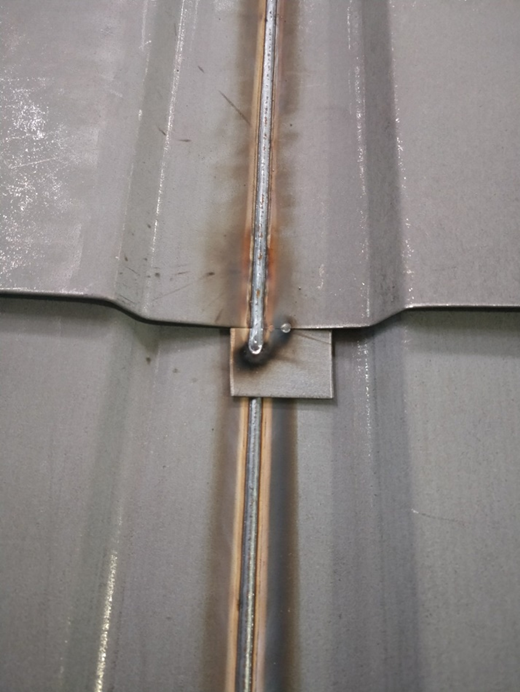
P5 Adding Arc Plate Effect
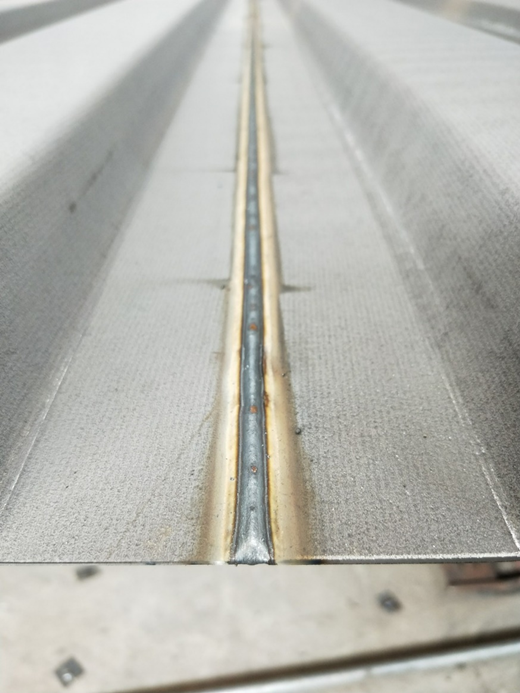
P6 Remove Arc Plate Effect
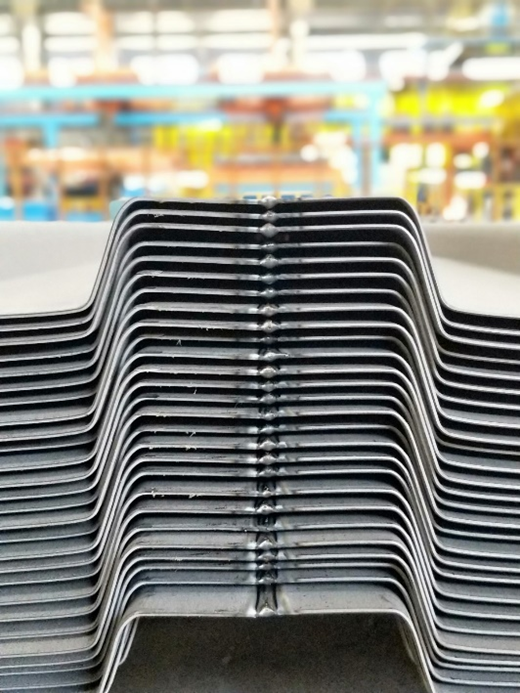
P7 Cross Section Weld Seam Effect
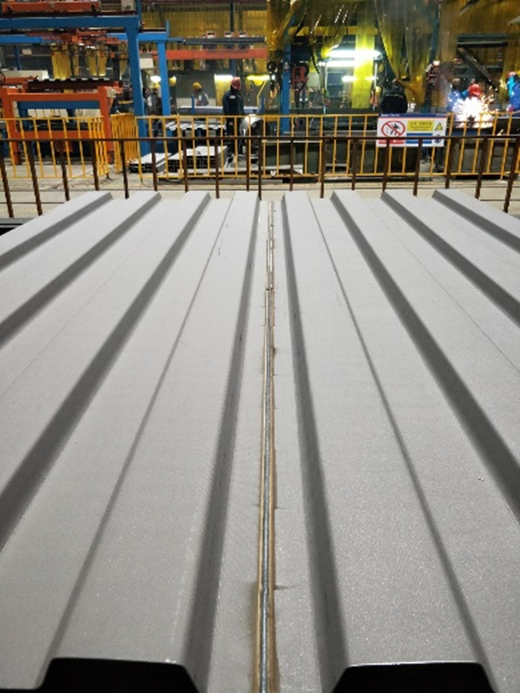
P8 Reverse Penetration Molding
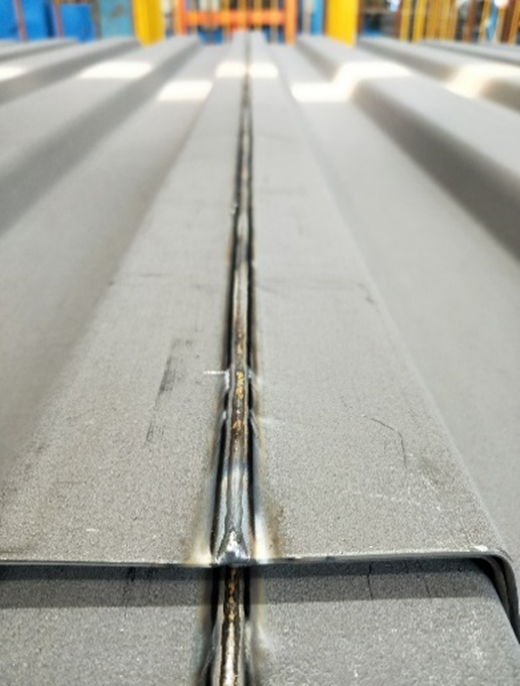
P9 Front Weld Seam Formation
V. Comparative Welding Efficiency:
Implementing Artsen II PM500F welding equipment and special machines in container welding, CIMC has resulted in substantial improvements:
1)Enhanced Welding Effectiveness: Achieved seamless welding, meeting stringent quality requirements.
2)Improved Seam Formation: remove the arc plate, direct arc start, single-side welding double-sided forming, arc and arc point without defects, back molding and penetration meets customer's requirements, welding stability, less splash.
3)Enhanced Welding Efficiency: the welding speed is 900mm/min, eliminating post-welding processes, thereby significantly boosting overall efficiency increased by 35%.
4)Unmatched Reliability: Demonstrated high reliability during extended operation periods (as long as 20 hours), ensuring consistent seam quality even across multiple welding stations.
VI. Application of Artsen II PM500F Welding Machine
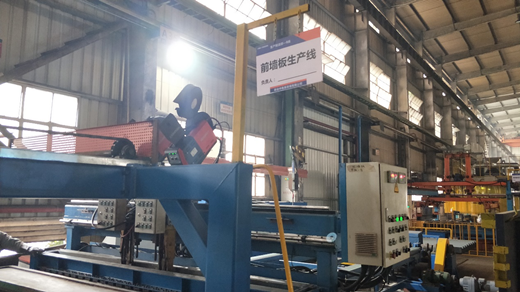
P10 Artsen II PM500F On-site Application
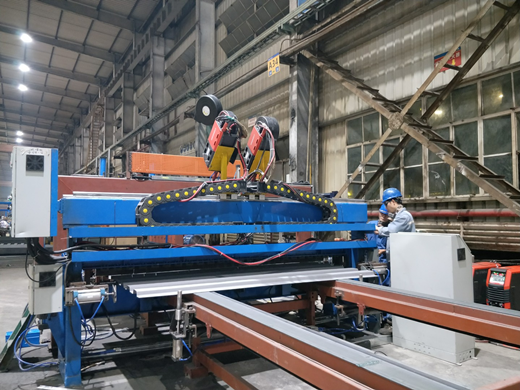
P11 Artsen II PM500F On-site Application





 />
/>







